Sodium bromide

Sodium bromide structure
|
Common Name | Sodium bromide | ||
|---|---|---|---|---|
| CAS Number | 7647-15-6 | Molecular Weight | 102.894 | |
| Density | 3,203 g/cm3 | Boiling Point | 1390 °C | |
| Molecular Formula | BrNa | Melting Point | 755 °C(lit.) | |
| MSDS | Chinese USA | Flash Point | 1390°C | |
| Name | sodium bromide |
|---|---|
| Synonym | More Synonyms |
| Density | 3,203 g/cm3 |
|---|---|
| Boiling Point | 1390 °C |
| Melting Point | 755 °C(lit.) |
| Molecular Formula | BrNa |
| Molecular Weight | 102.894 |
| Flash Point | 1390°C |
| Exact Mass | 101.908096 |
| Vapour Pressure | 1 mm Hg ( 806 °C) |
| Index of Refraction | 1.6412 |
| InChIKey | JHJLBTNAGRQEKS-UHFFFAOYSA-M |
| SMILES | [Br-].[Na+] |
| Stability | Stable. Incompatible with strong acids. Hygroscopic. |
| Water Solubility | 905 g/L (20 ºC) |
Synonym:Bromide salt of sodium, Sedoneura Section 2 - COMPOSITION, INFORMATION ON INGREDIENTS
Risk Phrases: None Listed. Section 3 - HAZARDS IDENTIFICATION EMERGENCY OVERVIEW
Hygroscopic. Potential Health Effects Eye: May cause eye irritation. Skin: May cause skin irritation. Ingestion: May cause gastrointestinal irritation with nausea, vomiting and diarrhea. Effects may be cumulative. May cause central nervous system effects such as psychosis, hallucinations, depression, visual changes and mental changes. Ingestion may cause skin eruptions and rash. Inhalation: May cause effects similar to those described for ingestion. Chronic: Chronic inhalation and ingestion may cause effects similar to those of acute inhalation and ingestion. May cause incoordination and mental disturbances. Section 4 - FIRST AID MEASURES Eyes: Flush eyes with plenty of water for at least 15 minutes, occasionally lifting the upper and lower eyelids. Get medical aid immediately. Skin: Flush skin with plenty of soap and water for at least 15 minutes while removing contaminated clothing and shoes. Get medical aid if irritation develops or persists. Ingestion: If victim is conscious and alert, give 2-4 cupfuls of milk or water. Never give anything by mouth to an unconscious person. Get medical aid immediately. Inhalation: Remove from exposure to fresh air immediately. If not breathing, give artificial respiration. If breathing is difficult, give oxygen. Get medical aid. Notes to Physician: Treatment includes hydration, mild diuresis, and possible hemodialysis. Consider the use of ammonium chloride in divided doses with a diuretic. Section 5 - FIRE FIGHTING MEASURES General Information: As in any fire, wear a self-contained breathing apparatus in pressure-demand, MSHA/NIOSH (approved or equivalent), and full protective gear. Substance is noncombustible. Extinguishing Media: Use extinguishing media most appropriate for the surrounding fire. Section 6 - ACCIDENTAL RELEASE MEASURES General Information: Use proper personal protective equipment as indicated in Section 8. Spills/Leaks: Vacuum or sweep up material and place into a suitable disposal container. Section 7 - HANDLING and STORAGE Handling: Wash thoroughly after handling. Use with adequate ventilation. Avoid contact with skin and eyes. Storage: Store in a cool, dry place. Store in a tightly closed container. Section 8 - EXPOSURE CONTROLS, PERSONAL PROTECTION Engineering Controls: Facilities storing or utilizing this material should be equipped with an eyewash facility and a safety shower. Use process enclosure, local exhaust ventilation, or other engineering controls to control airborne levels. Personal Protective Equipment Eyes: Wear appropriate protective eyeglasses or chemical safety goggles as described by OSHA's eye and face protection regulations in 29 CFR 1910.133 or European Standard EN166. Skin: Wear appropriate protective gloves to prevent skin exposure. Clothing: Wear a chemical apron. Respirators: Follow the OSHA respirator regulations found in 29CFR 1910.134 or European Standard EN 149. Always use a NIOSH or European Standard EN 149 approved respirator when necessary. Section 9 - PHYSICAL AND CHEMICAL PROPERTIES Physical State: Solid Appearance: white Odor: Odorless pH: 6.5-8.0 Vapor Pressure: 1 mm Hg @ 806 deg C Viscosity: Not available. Boiling Point: 1390 deg C @ 760.00mm Hg Freezing/Melting Point: 755 deg C Autoignition Temperature: Not available. Flash Point: 800 deg C ( 1,472.00 deg F) Explosion Limits, lower: Not available. Explosion Limits, upper: Not available. Decomposition Temperature: 800 deg C Solubility in water: 95g/100ml water (25 c) Specific Gravity/Density: 3.21g/cm3 Molecular Formula: BrNa Molecular Weight: 102.8938 Section 10 - STABILITY AND REACTIVITY Chemical Stability: Stable under normal temperatures and pressures. Conditions to Avoid: Incompatible materials, heating to decomposition, exposure to moist air or water. Incompatibilities with Other Materials: Strong acids - alkaloidal and heavy metal salts (lead, silver, manganese, antimony, mercury, etc.) - strong oxidizing agents - halogen halides - bromine trifluoride. Hazardous Decomposition Products: Hydrogen bromide, sodium oxide, bromine fumes. Hazardous Polymerization: Has not been reported Section 11 - TOXICOLOGICAL INFORMATION RTECS#: CAS# 7647-15-6: VZ3150000 LD50/LC50: CAS# 7647-15-6: Oral, mouse: LD50 = 7 gm/kg; Oral, rat: LD50 = 3500 mg/kg. Carcinogenicity: Sodiumbromide - Not listed by ACGIH, IARC, NIOSH, NTP, or OSHA. Other: See actual entry in RTECS for complete information. Section 12 - ECOLOGICAL INFORMATION Ecotoxicity: Water danger/protection: WGK 1 Bluegill sunfish LC50: >1000 mg/l/96H Rainbow trout LC50: >1000 mg/l/96H Daphnia magna LC50: >1000 mg/l/48H Bobwhite quail LD50: >2250 mg/kg Mallard duck LC50: >5633 ppm Bobwhite quail LC50: >5633 ppm Section 13 - DISPOSAL CONSIDERATIONS Dispose of in a manner consistent with federal, state, and local regulations. Section 14 - TRANSPORT INFORMATION IATA Not regulated as a hazardous material. IMO Not regulated as a hazardous material. RID/ADR Shipping Name: Not regulated. Dangerous Goods Code: UN Number: Section 15 - REGULATORY INFORMATION European/International Regulations European Labeling in Accordance with EC Directives Hazard Symbols: Not available. Risk Phrases: Safety Phrases: S 24/25 Avoid contact with skin and eyes. WGK (Water Danger/Protection) CAS# 7647-15-6: 1 United Kingdom Occupational Exposure Limits Canada CAS# 7647-15-6 is listed on Canada's DSL List. CAS# 7647-15-6 is listed on Canada's Ingredient Disclosure List. Exposure Limits US FEDERAL TSCA CAS# 7647-15-6 is listed on the TSCA inventory. SECTION 16 - ADDITIONAL INFORMATION N/A |
CHEMICAL IDENTIFICATION
HEALTH HAZARD DATAACUTE TOXICITY DATA
|
| Personal Protective Equipment | Eyeshields;Gloves;type N95 (US);type P1 (EN143) respirator filter |
|---|---|
| Hazard Codes | Xi: Irritant; |
| Risk Phrases | R36/37/38 |
| Safety Phrases | S24/25-S25 |
| RIDADR | NONH for all modes of transport |
| WGK Germany | 1 |
| RTECS | VZ3150000 |
| HS Code | 2827510000 |
| Precursor 7 | |
|---|---|
| DownStream 8 | |
| HS Code | 2827510000 |
|---|
|
Chemical isolation and characterization of different cellulose nanofibers from cotton stalks.
Carbohydr. Polym. 134 , 581-9, (2015) Recently, cellulose nanofibers (CNFs) have received wide attention in green nanomaterial technologies. Production of CNFs from agricultural residues has many economic and environmental advantages. In ... |
|
|
Antioxidants Inhibit Formation of 3-Monochloropropane-1,2-diol Esters in Model Reactions.
J. Agric. Food Chem. 63 , 9850-4, (2015) The capacities of six antioxidants to inhibit the formation of 3-monochloropropane-1,2 diol (3-MCPD) esters were examined in this study. Inhibitory capacities of the antioxidants were investigated bot... |
|
|
Toxic impact of bromide and iodide on drinking water disinfected with chlorine or chloramines.
Environ. Sci. Technol. 48(20) , 12362-9, (2014) Disinfectants inactivate pathogens in source water; however, they also react with organic matter and bromide/iodide to form disinfection byproducts (DBPs). Although only a few DBP classes have been sy... |
| sodium boron |
| NaBr |
| Sedoneural |
| Natriumbromid |
| SODIUM BROMID |
| EINECS 231-599-9 |
| Sodum bromide |
| bromuredesodium |
| bromnatrium |
| sodiium bromide |
| sodium bromine |
| Sodiumbomide |
| MFCD00003475 |
 CAS#:773837-37-9
CAS#:773837-37-9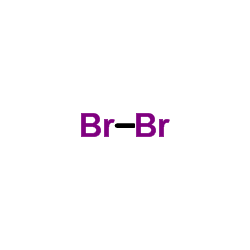 CAS#:7726-95-6
CAS#:7726-95-6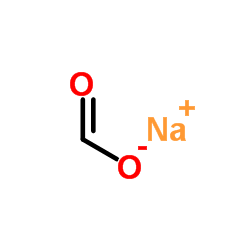 CAS#:141-53-7
CAS#:141-53-7 CAS#:18820-82-1
CAS#:18820-82-1 CAS#:10097-32-2
CAS#:10097-32-2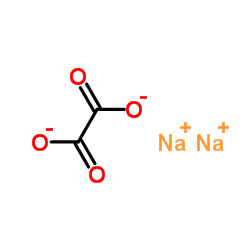 CAS#:62-76-0
CAS#:62-76-0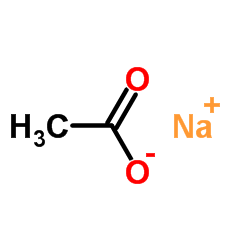 CAS#:127-09-3
CAS#:127-09-3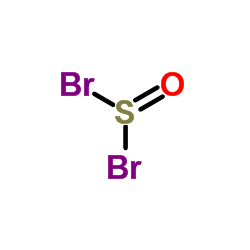 CAS#:507-16-4
CAS#:507-16-4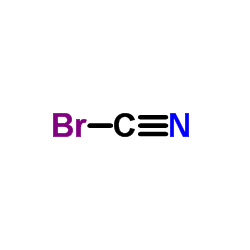 CAS#:506-68-3
CAS#:506-68-3 CAS#:7440-23-5
CAS#:7440-23-5 CAS#:7732-18-5
CAS#:7732-18-5 CAS#:7782-50-5
CAS#:7782-50-5 CAS#:13863-41-7
CAS#:13863-41-7
